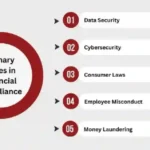Ah, business insights—if only there was a manual that told you exactly how to succeed. If there was, I’d probably be in a hammock on a beach somewhere instead of sitting here typing. But let’s be real: The road to entrepreneurial success is never that simple, right? The thing about business is, there’s no one-size-fits-all guide. It’s messy, it’s unpredictable, and, if you’re lucky, it’s a bit exhilarating. Anyway, let me share what I’ve learned (sometimes the hard way) to help you avoid a few missteps.
So, you’ve got a killer idea. Or maybe, like me, you’re still putting together your “big plan” over your third cup of coffee. But regardless of where you’re at, you’ll need to break things down a bit to truly thrive in the business world. Think of it as a treasure hunt, but instead of X marking the spot, it’s a business model, savvy marketing, and managing your finances—plus a few lucky breaks.
Know Your Market—But Don’t Overthink It
One of the first business insights I’ll hit you with? Understand your market. Like, really understand it. You can’t build something people need if you don’t know who you’re building it for. It’s like trying to bake a cake for a party where you don’t even know if your guests are vegan or gluten-free. Good luck with that.
I’ll admit it: I used to think “market research” meant reading a few stats online, then patting myself on the back like I was some kind of business genius. Ha! Wrong. It’s much deeper than that. This is where you have to dive into the trenches—talk to people, read industry reports, attend meetups, and yeah, even stalk your competitors. It’s less about the big picture and more about the tiny details. Figure out who your customers are and what’s making them tick (or not tick).
Take a lesson from my first “business venture,” which I’ll only call “the disaster of 2017.” I thought I could sell homemade lip balm with my “all-natural” ingredients. Spoiler alert: It was, in fact, not natural enough, and I didn’t check if anyone even wanted a jar of weird-smelling beeswax goo. You can guess how that turned out.
Build Your Brand, Even When It’s Hard
Next up: branding. This is your chance to make a lasting impression. A solid brand is like that one friend who always nails their outfit without even trying. Everyone remembers them.
But here’s the kicker: You can’t just throw some colors together and slap a logo on it. Your brand needs to be consistent across the board. It’s not just about what your product looks like—it’s how it makes people feel. Whether you’re selling a tech gadget or a hand-knit sweater, your brand needs to reflect your story, your values, and why people should care.
When I first started thinking about branding, I had zero clue. I mean, “branding” felt like some fancy, untouchable thing. But one afternoon, while watching Shark Tank (my “business inspiration” phase), I realized branding was more like… a relationship. You want customers to know who you are and trust you. No one wants to buy from a stranger in a trench coat, right?
Pro tip: Invest in your brand’s voice early on. If your business was a person, how would they talk? How would they show up in the world? (Yeah, this is kind of like being a pretend therapist for your brand.)
Scalability Isn’t Just a Buzzword—It’s a Lifeline
Let’s talk scalability. If you’re planning on growing your business beyond a side hustle, you need a plan to scale. It’s kind of like trying to build a snowman—you start with a little ball, but as it rolls, it gets bigger and bigger. That’s the dream, right?
Start by looking at your business model. Is it built to handle more customers? Are there parts of your business that could be automated? I learned this the hard way. My first venture (don’t ask) involved selling T-shirts. I sold 20 shirts, then 50, then 100. Suddenly, I was hand-writing every order, trying to fold each shirt with the precision of a military operation. Not scalable. Spoiler alert: the T-shirt business is now a cautionary tale in my mind.
Here’s a reality check: you need systems. Don’t just hire people or build a product without thinking about how you can scale it. This is where software, outsourcing, and systems come in handy. Trust me—you don’t want to get stuck on manual labor when you’re outgrowing your market.
Tech: The Best Friend You Didn’t Know You Needed
Technology: Not just for nerds. This is something that really hit me when I realized how much time I was wasting on things I could easily automate. It’s 2025, people. There’s no excuse to be handwriting invoices when you can use QuickBooks.
Leverage tools. There are countless apps and platforms out there that can help you streamline your business processes, from inventory management to customer outreach. I once spent days trying to track sales manually (because I thought I was being “smart” and “thrifty” by not investing in tools). Big mistake.
I love a good spreadsheet, but guess what? Spreadsheets won’t get you through a 24-hour product launch. Do yourself a favor and put tech at the heart of your operations. Automate. Outsource. Outsmart. I promise you won’t regret it.
Resilience: More Than Just a Buzzword
Business can be a real grind. Rain. Mud. A shovel. That’s how my composting disaster began. Just kidding—but seriously, there will be days when you want to quit. When you hit roadblocks, failures, or, well… utter chaos.
One lesson I learned early on: Resilience is not optional. There’s no point in pretending it’s all going to be smooth sailing. The real key to success is to keep getting back up every time you fall. And you will fall. Often.
Don’t let failure scare you. Each setback is an opportunity to learn, grow, and get better. Honestly, if I’d given up after my first business venture, I wouldn’t be here writing this. I’d be telling you all about my latest failure over overpriced coffee.
Keep Your Cash Flow in Check
Here’s where the fun part of business comes in: money. You’ve got your idea, your team, your tech—but if you don’t manage your finances well, it’s all for nothing. Cash flow is king, period.
I can’t tell you how many entrepreneurs I know (including myself, unfortunately) who’ve learned this lesson the hard way. You need to track your expenses, understand your profits, and be able to forecast your cash flow. Don’t just wait for the bills to pile up, praying you’ll make enough next month. Be proactive.
Learn from my mistakes. The first time I sold something, I didn’t factor in taxes or expenses, and, well… let’s just say, my accountant had a lot of questions. Now? I keep a tight grip on my financials. You can’t afford to be casual about it.
Conclusion
Fast forward past the failures, the bad investments, and all the coffee-fueled brainstorms. What it really boils down to is this: Don’t be afraid to mess up. Don’t be afraid to fail. But also? Do everything you can to learn from it. The most successful entrepreneurs are the ones who can take a punch and keep going—whether it’s in the form of market changes, tech disruptions, or a bad pitch.










Important Posts
The Future of Work: Trends That Will Shape the Next Decade
Business News & Strategies – Grow Your Wealth & Success
How AI is Transforming the Future of Business